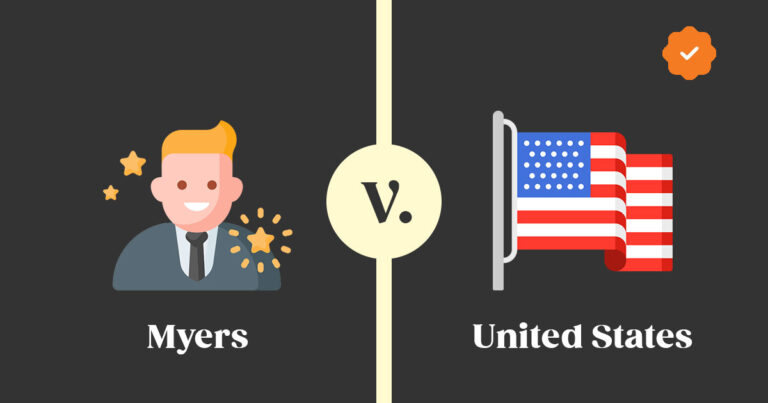Quick Summary
The President of the United States, Woodrow Wilson’s office (D), appointed postmaster Frank S. Myers (P) to a four-year term of employment. The Senate approved this position, but the President fired Myers after three years without Senate’s approval. Myers sued for unpaid wages in the Court of Claims for being removed from his position without Senate’s approval. Myers argued based on the rule of 1876 that required the Senate’s approval to remove an officer from its position.
The issue before the court was whether or not the President may remove an officer without the consent of the Senate.
As the court ruled, only the President can fire appointees.
Even though the officer was appointed with the Senate’s approval and there are no provisions for his removal for cause, the President may still remove the officer under his executive power of appointment.
Rule of Law
The Constitution grants the President executive power, which includes the right to appoint and remove executive officers. President has the authority to make provisions for the appointment and removal of subordinate officers only after it has vested their appointment in an authority other than the President with Senate approval.
Facts of the Case
On July 21, 1917, Frank S. Myers (plaintiff), who was working as a postmaster in Portland, Oregon at the time, was given a four-year term of employment by the United State’s President office. This position has since been filled, and it has also received approval from the Senate.
On February 2, 1920, an order from the President led to the dismissal of Myers. When Myers went to the Court of Claims, he submitted a claim for wages totaling $8,838.71 that had not been paid to him.
The Court of Claims concluded that it was appropriate to remove Myers from office even though the Senate had not been consulted or given its approval. Myers responded by submitting a rebuttal. A rule that was established by the President in 1876 required the permission of the Senate to remove the postmaster from Portland, Oregon. That individual was able to be appointed because the Senate gave their approval.
Issue
Does the office of the President have the power to remove an officer from their position without the consent of the Senate?
Holding and Conclusion
Yes
After examining the 1789 congressional debate on the President’s appointment power, Chief Justice Taft determined that only the President has the authority to remove appointed officials.
Under his general power of appointment, the President could remove an officer despite the fact that he was appointed with the Senate’s advice and consent and despite specific provisions for his removal for cause.
When you have the authority to appoint, you also have the authority to remove.
Reasoning and Analysis
In the event of a political or other conflict with the Senate or Congress, it would be difficult for the President to ensure the merit-based execution of legislation.
Relevant FAQs of this case
Can the president remove appointed officials?
According to the Appointments Clause, the Senate must approve the president’s nominations for government offices. Such offices are typically held by ambassadors, Cabinet secretaries, and federal judges.
Congress lacks the authority to make appointments. This may be the case. However, the Appointments Clause of the Constitution stipulates that only the President, the Courts, or the individual agency heads may select subordinate officers.
In its 1988 decision, Morrison v. Olson, the United States Supreme Court established a barrier between United States officers and subordinate officers. Only Cabinet secretaries, ambassadors, and federal judges are permitted to use the title “officer,” as stated by the Supreme Court. Every other type of government official is substandard. This category includes federal prosecutors, district court clerks, chaplains, and federal election supervisors. In Myers v. United States (1926), the Supreme Court declared that the president of the United States had the sole authority to remove appointees without the consent of Congress. Not included are federal judges.
What rights does U.S President have?
The President is the nation’s highest civilian and military officer. Article II states that the President is responsible for carrying out the laws established by Congress. The administration of the federal government is the responsibility of fifteen Cabinet-level departments. Additionally, the President controls executive agencies such as the CIA and the Environmental Protection Agency.
The President appoints the chairs of over fifty independent federal commissions, including the Federal Reserve Board and the Securities and Exchange Commission. In addition, the White House, OMB, and the US Trade Representative are EOP members. Two-thirds of the legislature must override a veto.
The Executive Branch is responsible for international diplomacy, and the President is responsible for negotiating and signing treaties. The President’s orders can instruct government officials and clarify law issues. The President can grant pardons.
References
Was this case brief helpful?
